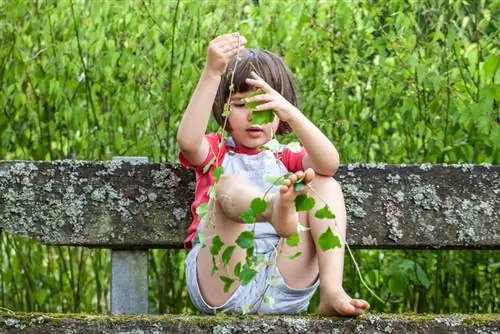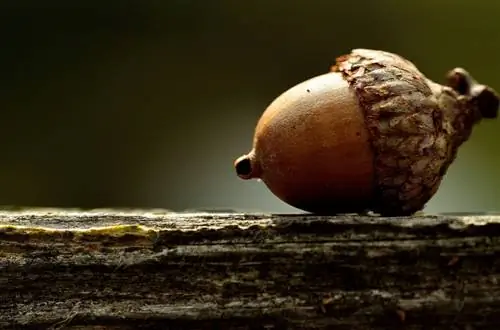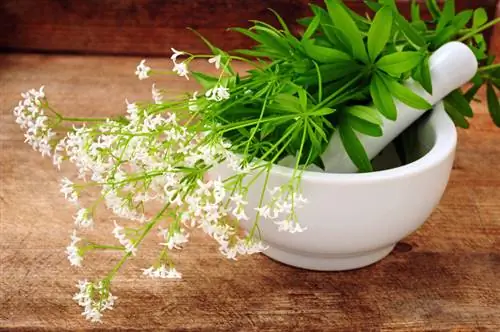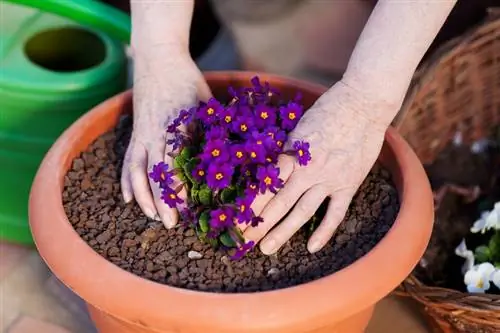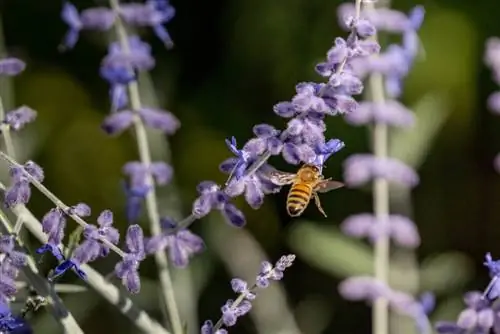- Author admin [email protected].
- Public 2023-12-16 16:46.
- Last modified 2025-01-23 11:20.
Ivy is a poisonous plant. The climbing plant contains substances that are toxic not only when consumed, but also when they come into contact with the skin. The plant is considered to be a particularly poisonous ivy in its old form, in which it produces flowers and fruits. The fruits in particular contain a lot of toxins and should under no circumstances be eaten.
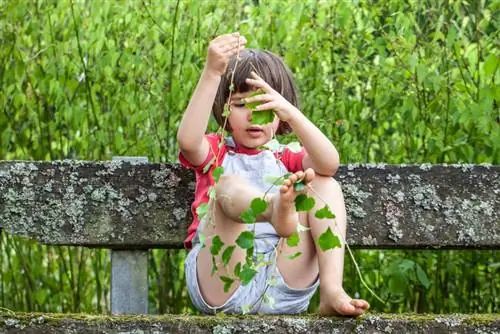
Why is ivy poisonous?
Ivy is poisonous because it contains the toxic substances hederin and saponins in all parts of the plant, especially in the berries. There is a risk of poisoning if consumed or in contact with skin, especially for children and animals.
Ivy is one of the poisonous plants in the garden
Ivy contains the toxic substances hederin and saponins in all parts of the plant, but especially in the berries. There is a real risk of poisoning if consumed or contacted, especially for children and animals.
If you have children or pets, you should therefore avoid planting ivy in the garden. You should also not care for the climbing plant indoors.
Symptoms of poisoning when eating the berries
Ivy berries do not pose such a big danger to adults because the fruits taste very unpleasant. However, adults should of course not eat ivy in any form. Just two to three berries can cause serious poisoning.
When poisoned by the fruits of ivy, different symptoms occur. Stomach and intestinal problems, burning in the throat, states of excitement and a rapid pulse are particularly noticeable. Severe poisoning can lead to shock and respiratory arrest. In the worst case scenario, eating ivy berries will result in death.
Just contact with ivy can be dangerous
The leaves of the ivy are not quite as poisonous as the berries. However, they also contain toxins that can cause inflammation and pustule formation on the skin of sensitive people. When planting or cutting ivy, you should always wear gloves.
When cutting the ivy vines, tiny particles are created that you should not inhale. Allergy sufferers are particularly at risk here, but even he althy people should not absorb too many of these substances through their breathing. If you need to cut large amounts of ivy or remove it from the garden, wear a breathing mask to be on the safe side (€30.00 on Amazon).
Take all cuttings away immediately and don't leave them lying around. Then animals in the garden cannot be poisoned by it.
Ivy poisonous for children
Ivy poses a particular danger to children. If children eat a few leaves, it will not be life-threatening, but they can cause severe discomfort.
However, the berries are so toxic that children can become seriously poisoned. Eating just two to three berries can lead to shock with an uncertain outcome.
If you suspect that your child has eaten ivy leaves or ivy fruits, you should seek medical advice immediately. Symptoms of ivy poisoning are:
- Headache
- Diarrhea
- Vomiting
- fast pulse
- Shock
- respiratory arrest
What you can do if you are poisoned with ivy
If you suspect or are definitely poisoned by ivy, don't hesitate for long. See a doctor or hospital immediately that can provide detoxification. First aid is also offered by the poison control centers, whose telephone numbers you can find on the Internet.
Pets are also at risk
Pets can also get poisoned by ivy. Whether dogs, cats, guinea pigs, hamsters or birds, even horses can die from ivy poisoning. Interestingly, donkeys don't seem to have any problems with the ingredients in ivy.
The symptoms are similar to those in humans. The animals suffer from agitation, cramps, stomach and intestinal problems and even states of shock.
In the event of poisoning, contact a veterinarian immediately who will treat the dog, cat or rodent.
Poison ivy also as a houseplant
Whether you grow ivy in the garden or as a houseplant does not play a big role in terms of toxicity. Although plants kept indoors do not develop berries, the leaves and shoots also contain toxins.
If you want to keep ivy in the house or on the balcony and terrace, make sure that neither children nor animals can get near it. Collect fallen leaves immediately to prevent the risk of poisoning.
Poison Ivy in America
Even though the native ivy species are already very poisonous - the varieties represented here cannot keep up with American ivy, also known as poison sumac. Poison sumac has significantly higher concentrations of toxins, meaning consumption is often fatal. Skin contact causes severe inflammation, reminiscent of burns.
Tip
Ivy has played a role in homeopathy and natural medicine since ancient times. Tea made from the leaves is used for diseases such as bronchitis. Ivy is also used in the production of shampoo and other personal care products.

